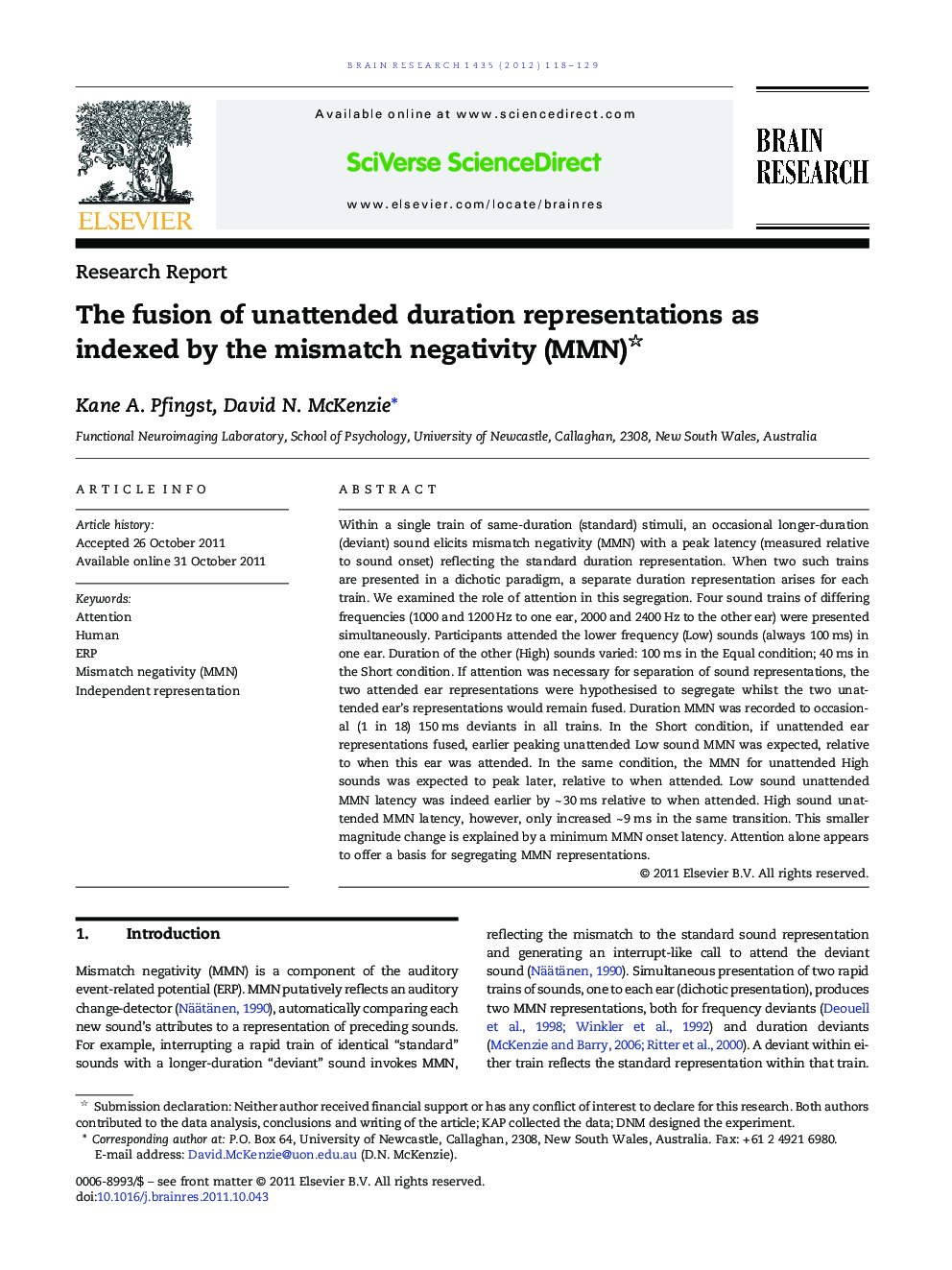| Article ID | Journal | Published Year | Pages | File Type |
|---|---|---|---|---|
| 4325468 | Brain Research | 2012 | 12 Pages |
Within a single train of same-duration (standard) stimuli, an occasional longer-duration (deviant) sound elicits mismatch negativity (MMN) with a peak latency (measured relative to sound onset) reflecting the standard duration representation. When two such trains are presented in a dichotic paradigm, a separate duration representation arises for each train. We examined the role of attention in this segregation. Four sound trains of differing frequencies (1000 and 1200 Hz to one ear, 2000 and 2400 Hz to the other ear) were presented simultaneously. Participants attended the lower frequency (Low) sounds (always 100 ms) in one ear. Duration of the other (High) sounds varied: 100 ms in the Equal condition; 40 ms in the Short condition. If attention was necessary for separation of sound representations, the two attended ear representations were hypothesised to segregate whilst the two unattended ear's representations would remain fused. Duration MMN was recorded to occasional (1 in 18) 150 ms deviants in all trains. In the Short condition, if unattended ear representations fused, earlier peaking unattended Low sound MMN was expected, relative to when this ear was attended. In the same condition, the MMN for unattended High sounds was expected to peak later, relative to when attended. Low sound unattended MMN latency was indeed earlier by ~ 30 ms relative to when attended. High sound unattended MMN latency, however, only increased ~ 9 ms in the same transition. This smaller magnitude change is explained by a minimum MMN onset latency. Attention alone appears to offer a basis for segregating MMN representations.
► MMN latency was measured with 4 sets of sounds (2 per ear) simultaneously presented. ► Equal condition: all standards 100 ms; Short condition: one set per ear now 40 ms. ► In the Equal condition, both unattended ear latencies reflected 100 ms standards. ► Short condition unattended ear latency reflected average of both standard durations. ► We argued that strongly focussed attention segregates duration representations.
